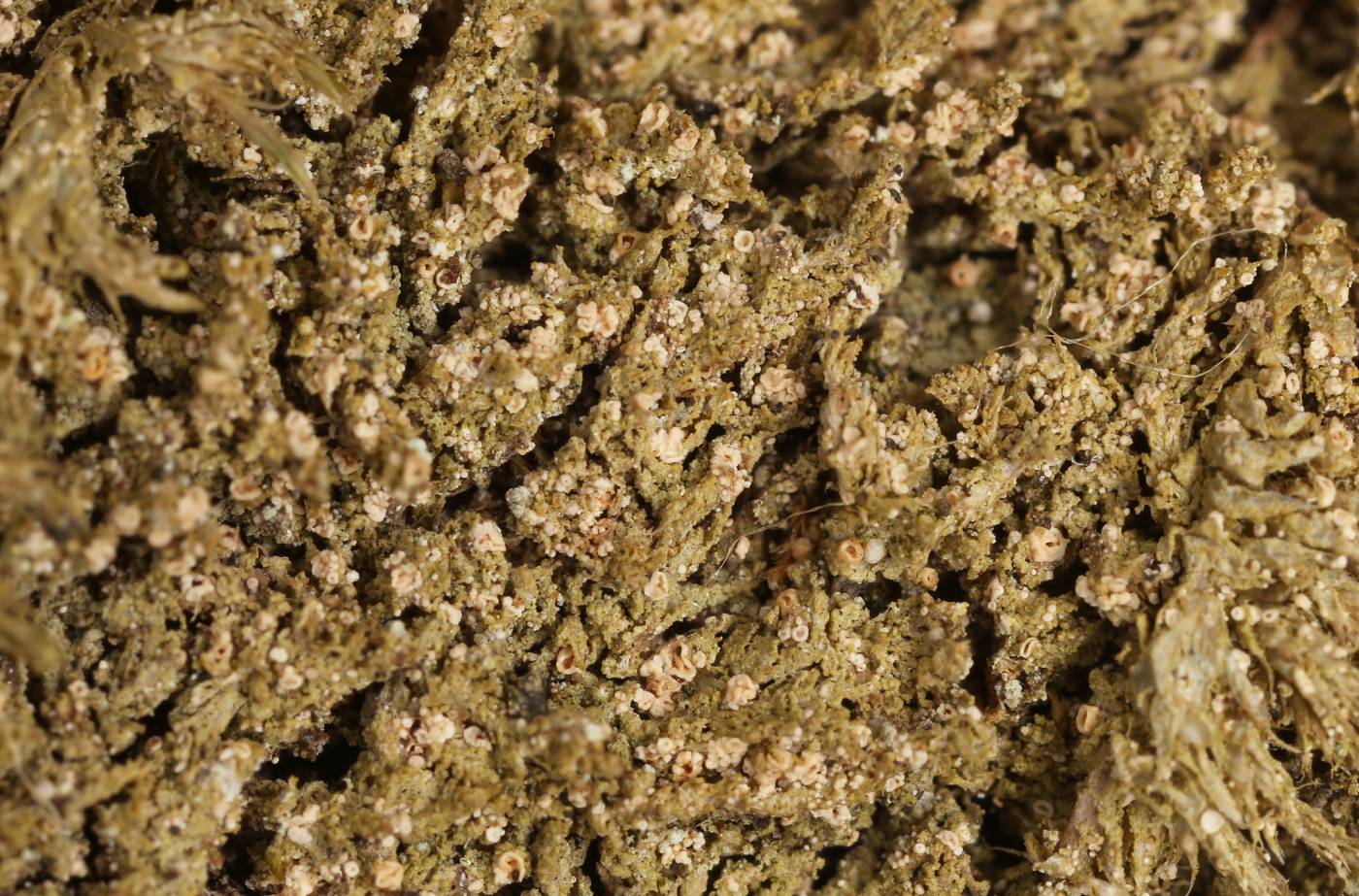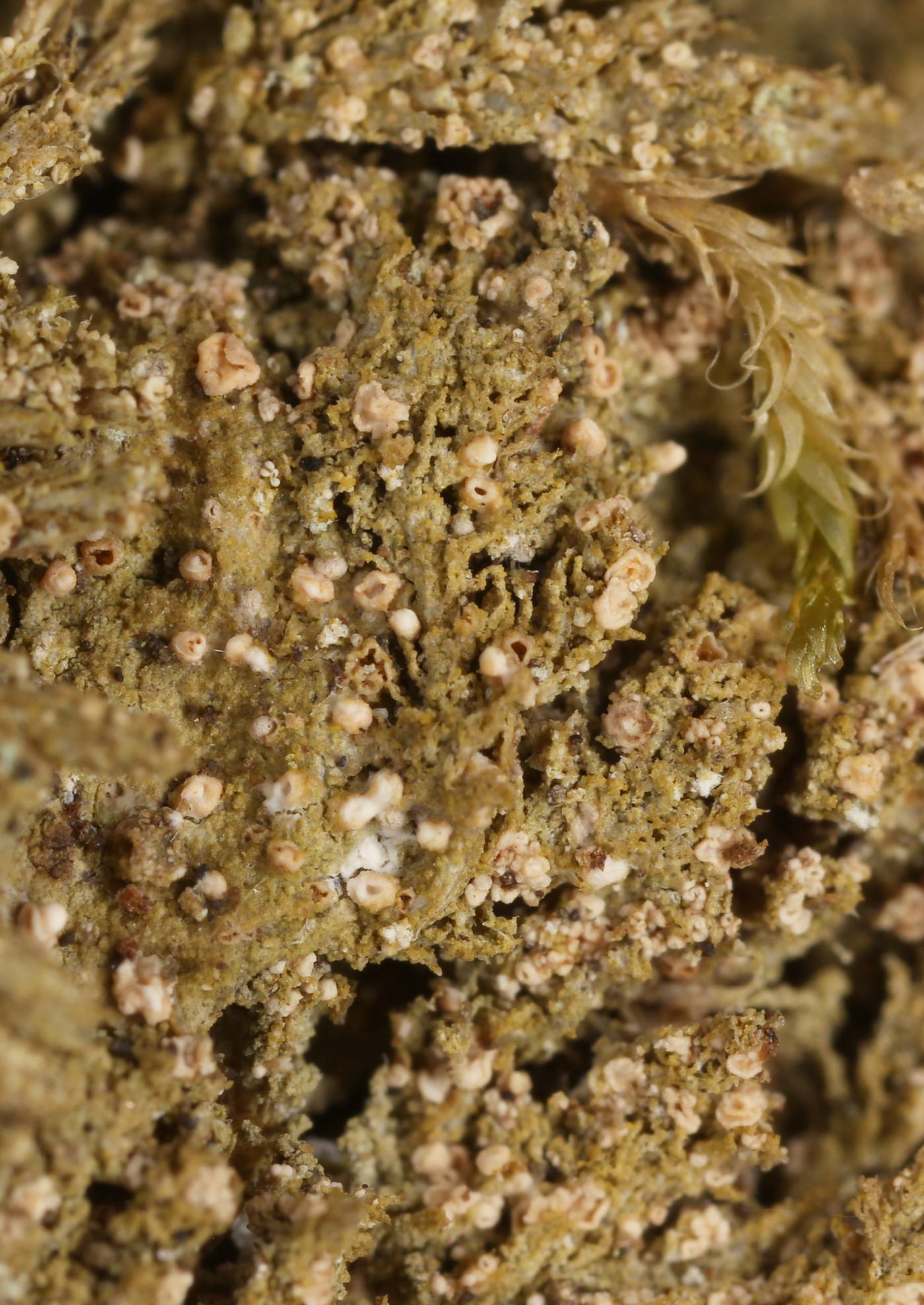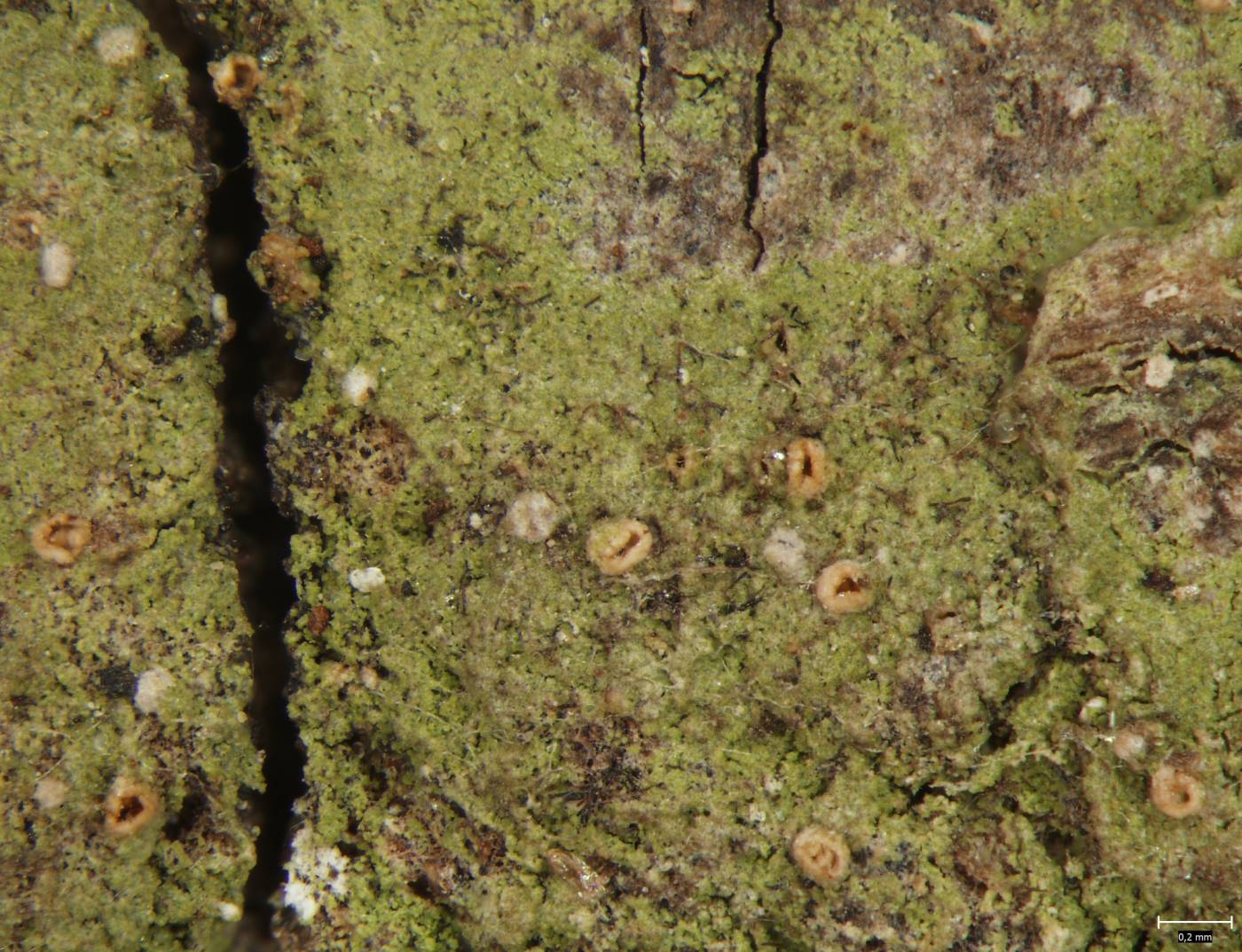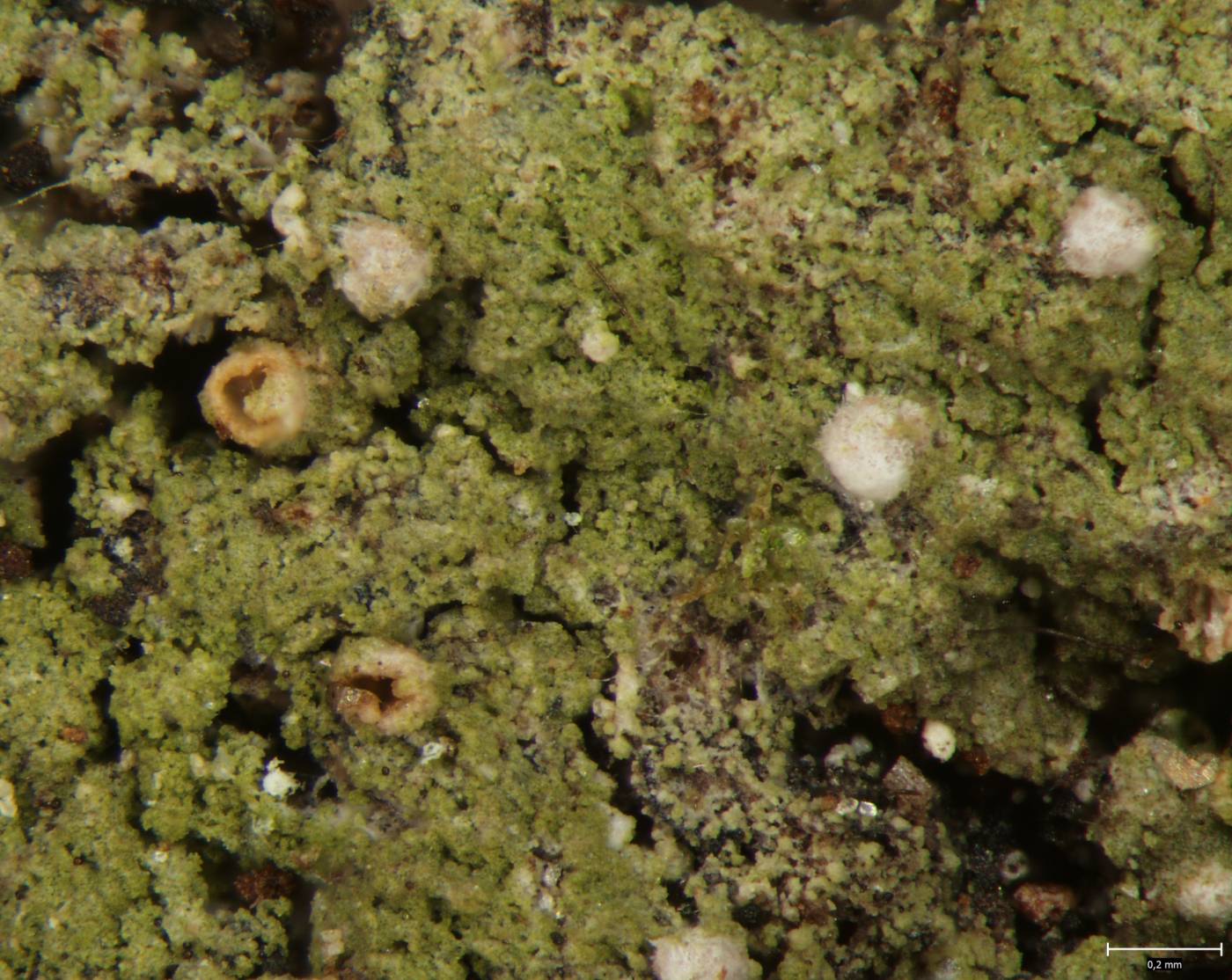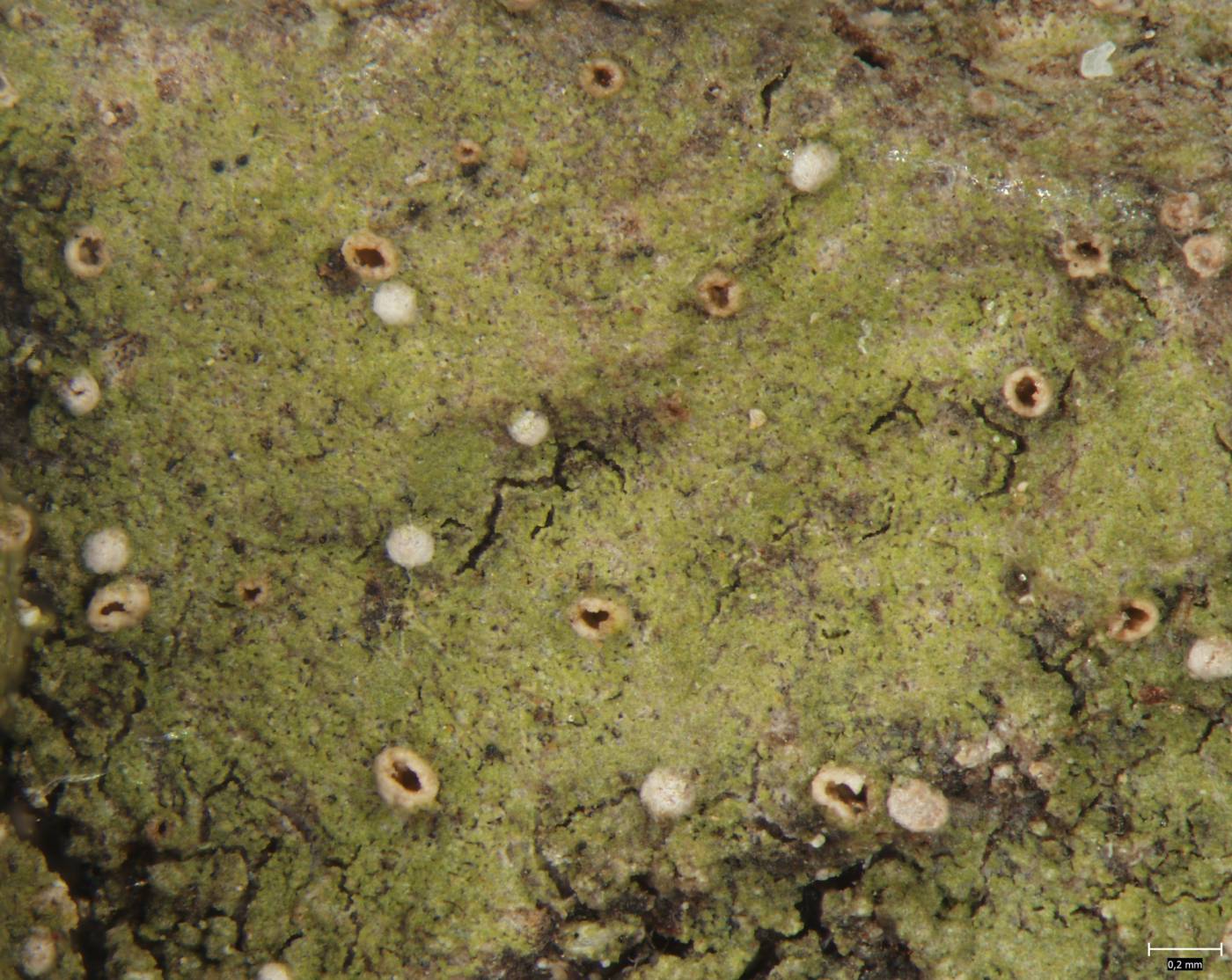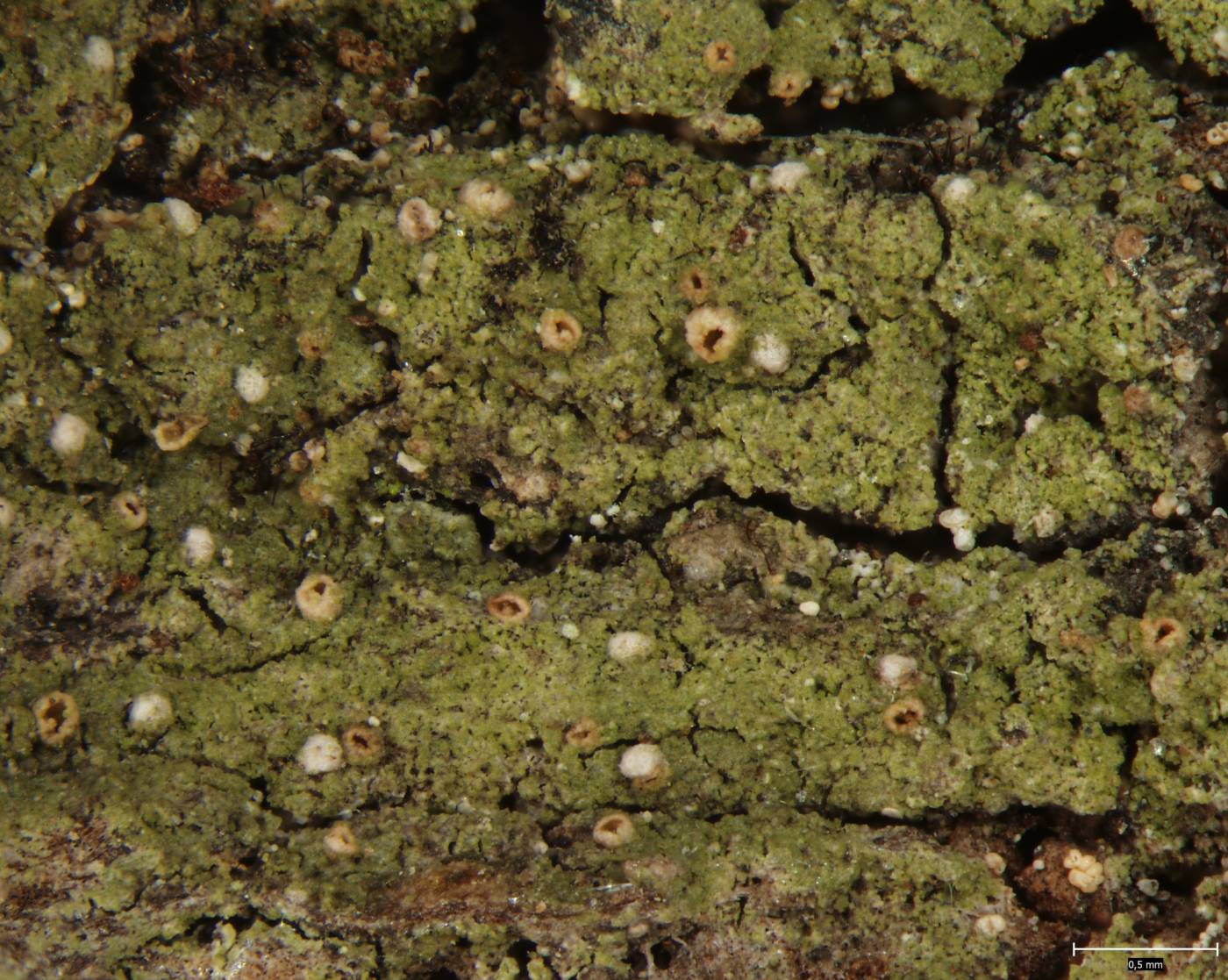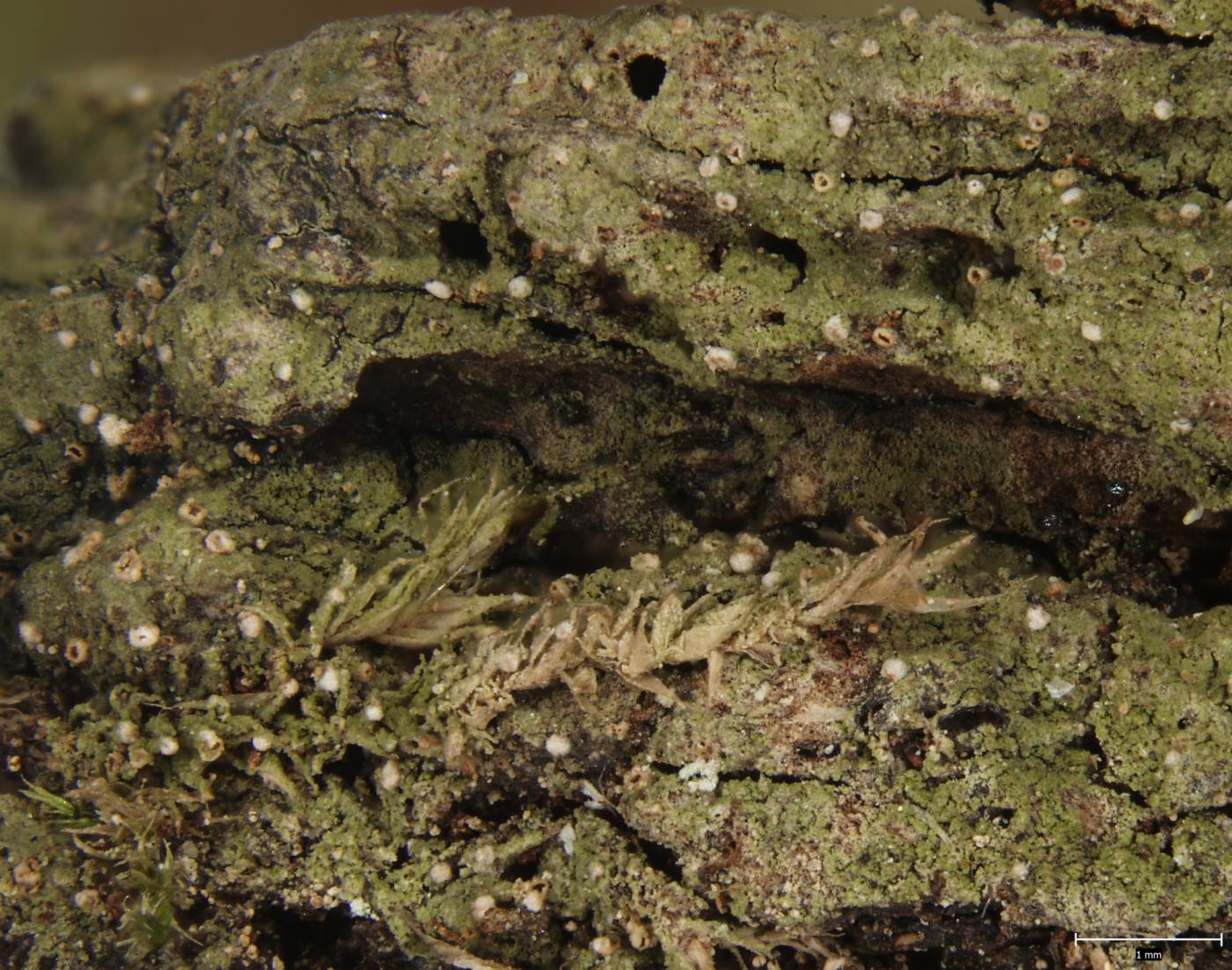A rare epiphytic lichen, usually found in the form of relatively conspicuous light pycnidia containing gyrophoric acid (C+ red spot reaction) in larger deciduous forest complexes. The species is still known only from Central and Eastern Europe, where it inhabits old moist forests in valleys (Sérusiaux et al. 2001). In Poland, where the most localities are known, F. gyrophorica is considered an indicator of primeval lowland deciduous stands. It occurs there even on relatively young trees (Kubiak 2011). Its usual substrate is an acid bark of oaks, alders and hornbeams, but it does not avoid conifers (fir, spruce). The species often occurs in large populations. However, in the Czech Republic, it has so far been recorded only individually, in four localities in southern and central Bohemia (Malíček & Palice 2013, Palice 2019, Vondrák, unpubl.). The actual population is expected to be larger, at least in the South Bohemian region.
Literature: Sérusiaux E., Coppins B. J., Diederich P. & Scheidegger C. (2001): Fellhanera gyrophorica, a new European species with conspicuous pycnidia. – Lichenologist 33: 285–289. Kubiak D. (2011): Distribution and ecology of the lichen Fellhanera gyrophorica in the Pojezierze Olsztyńskie Lakeland and its status in Poland. – Acta Societatis Botanicorum Poloniae 80: 293–300. Malíček J. & Palice Z. (2013): Lichens of the virgin forest reserve Žofínský prales (Czech Republic) and surrounding woodlands. – Herzogia 26: 253–292. Palice Z. (2019): Inventarizační průzkum PR Dívčí kámen (CHKO Blanský les) – lišejníky. – Ms. [Depon. in AOPK ČR, Praha.]
taxonomic classification:Ascomycota → Lecanoromycetes → Lecanorales → Pilocarpaceae → Fellhanera
Red List (Malíček 2023):C2 – strongly endangered
Occurrence in the Czech Republic
All records: 5, confirmed 5. One click on a selected square displays particular record(s), including their source(s).
